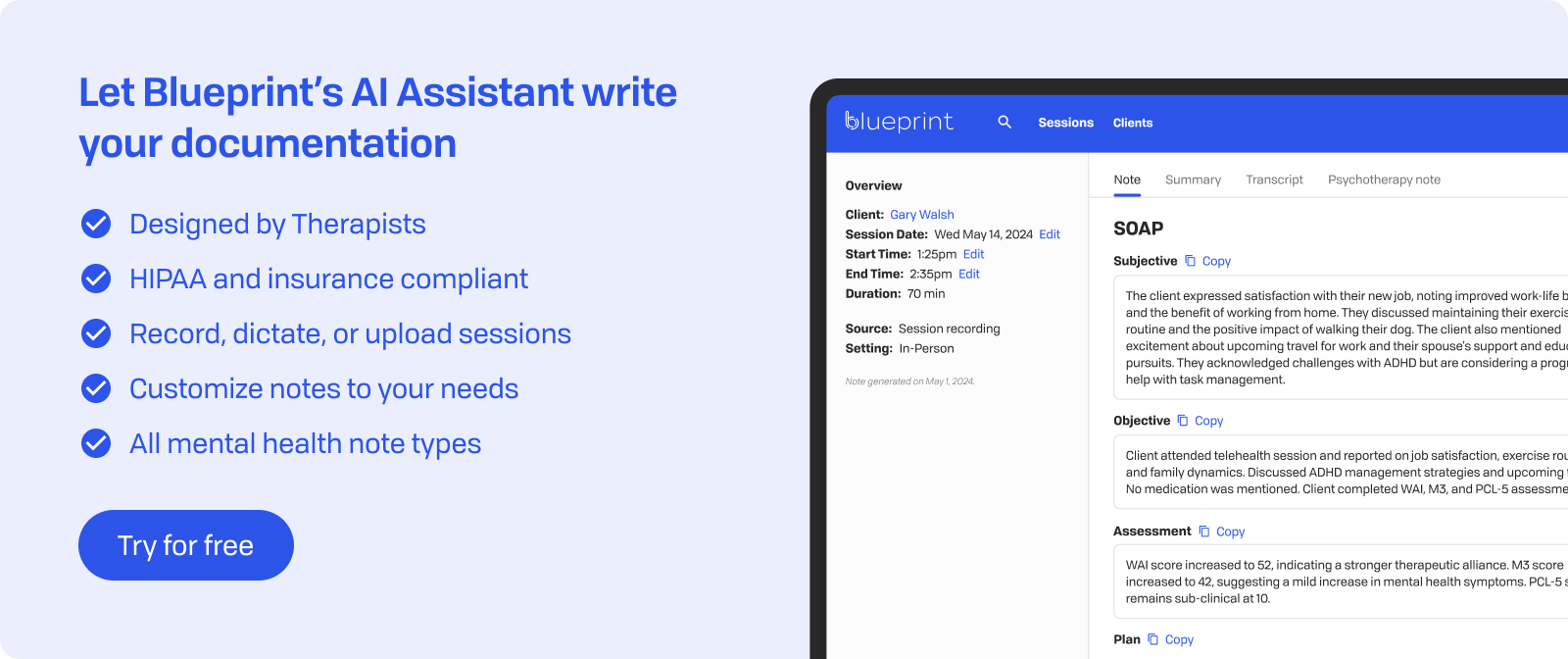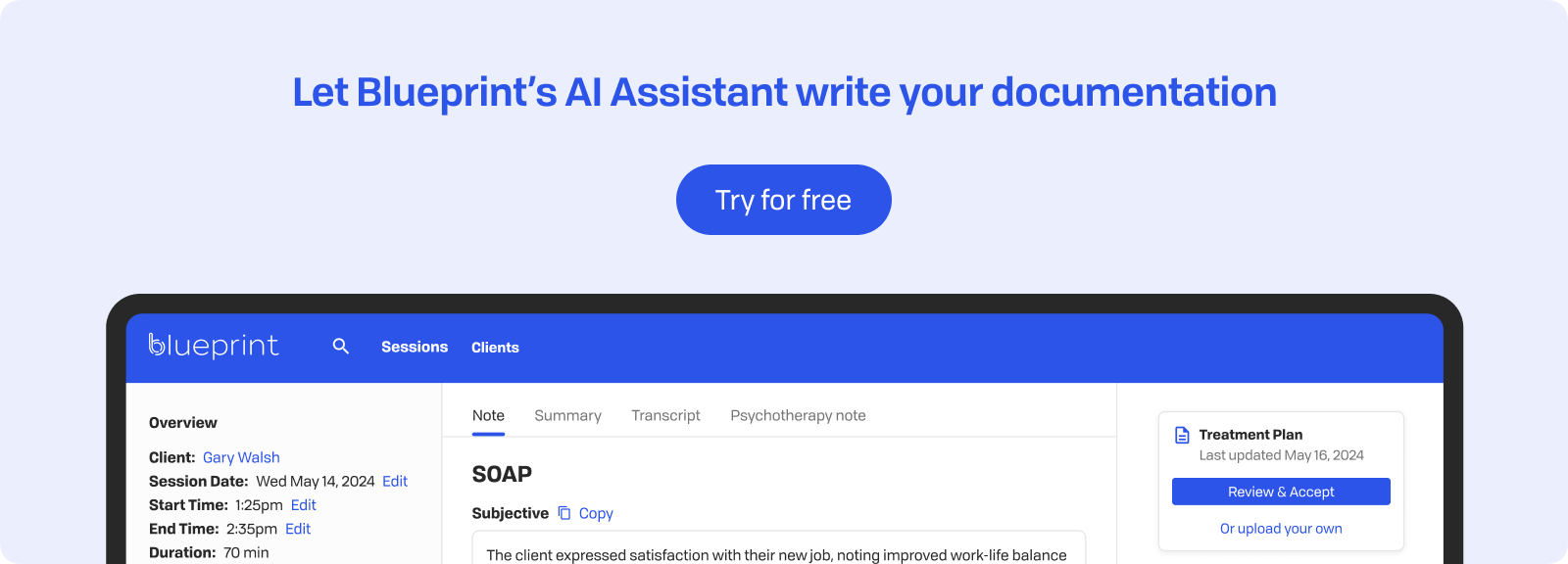
In Brief
Clients often come to therapy caught in repetitive thought patterns that keep them stuck. These mental loops cause unnecessary suffering and block meaningful progress in therapy. Recognizing and addressing these patterns is key to effective treatment.
Thinking errors shape how clients view themselves, others, and the world. They filter experiences through a distorted lens, turning neutral situations into catastrophes or minor setbacks into perceived evidence of personal failure. These patterns often operate subconsciously, influencing emotions and behaviors in profound ways.
The good news is that once identified, these problematic thought patterns can be challenged and changed. With the right therapeutic approach, clients learn to recognize when their thinking goes off track and develop healthier, more balanced perspectives. This change in thinking often leads to significant improvements in mood, relationships, and overall functioning.
What Are Thinking Errors
Thinking errors are maladaptive patterns of thought that distort reality and create unnecessary emotional distress. Also known as cognitive distortions, these automatic thought patterns twist our perception of events, ourselves, and others. They're closely linked to anxiety, depression, and various other mental health challenges.
These distortions develop over time through experiences, learning, and emotional responses to life events. They become mental shortcuts that our brains use to process information quickly, but unfortunately, they often mislead us. Instead of helping us navigate the world effectively, thinking errors trap us in cycles of negative emotions and self-defeating behaviors.
Research consistently shows that thinking errors play a central role in maintaining psychological distress. They act as a filter through which all experiences pass, coloring our interpretation of events in predictable but unhelpful ways. When clients learn to identify and challenge these patterns, they can break free from distorted thinking and develop more adaptive ways of processing their experiences.

Common Types of Thinking Errors
No one is immune to thinking errors. These distorted patterns of thought can affect anyone, and in therapy they often show up as barriers to growth and healing. Recognizing specific distortions helps therapists choose targeted interventions that disrupt these unhelpful cycles. Here are some of the most common thinking errors encountered in clinical practice:
- All-or-Nothing Thinking: Clients see situations in absolute terms with no middle ground. They might say "I always mess everything up" or "If I can't do it perfectly, I won't do it at all." This black-and-white perspective eliminates nuance and sets unrealistic standards.
- Catastrophizing: Imagining the worst possible outcome and treating it as inevitable. Clients spiral into "what if" scenarios: "What if I lose my job? I'll become homeless and everyone will abandon me." They exaggerate potential consequences far beyond realistic probability.
- Overgeneralization: Drawing broad conclusions from isolated incidents. After one awkward social interaction, a client might conclude "I'm terrible at making friends" or "Nobody ever understands me." Single events become universal truths in their minds.
- Personalization: Taking excessive responsibility for external events or assuming everything relates to them. A client might blame themselves for their partner's bad mood or interpret a colleague's neutral expression as disapproval.
- Mind Reading: Assuming knowledge of others' thoughts without evidence. Clients convince themselves, "She thinks I'm incompetent" or "Everyone can tell I'm anxious," based on their own insecurities rather than actual feedback.
These thinking errors rarely occur in isolation. Most clients exhibit multiple patterns that reinforce each other, creating complex webs of distorted cognition that maintain their distress.
How Thinking Errors Affect Clients
Thinking errors trap clients in a cycle of psychological distress that feeds on itself. These distorted thought patterns not only influence how clients think but also shape their emotions, behaviors, and relationships. Recognizing this impact helps therapists understand why addressing cognitive distortions is vital for meaningful therapeutic change.
The emotional effects of thinking errors are immediate and significant. When clients engage in catastrophizing or all-or-nothing thinking, they often experience anxiety, depression, or anger, which feels justified based on their distorted perceptions. These negative feeling states then reinforce the thinking errors, creating a feedback loop that maintains psychological symptoms.
Thinking errors also lead to self-defeating behaviors and interpersonal problems:
- Self-Criticism and Low Self-Worth: Personalization and overgeneralization cause clients to blame themselves excessively, eroding self-esteem and confidence.
- Avoidance Patterns: Catastrophizing makes clients avoid challenges or opportunities, limiting their growth and reinforcing feelings of inadequacy.
- Relationship Conflicts: Mind-reading and personalization create misunderstandings and defensive reactions that harm relationships.
- Hopelessness and Despair: Multiple thinking errors combine to create a worldview where positive change seems impossible.
Most importantly, thinking errors create barriers to therapeutic progress. Clients who filter everything through distorted thoughts struggle to adopt new perspectives or recognize their own growth. They dismiss positive experiences as flukes while magnifying setbacks, making it difficult to build momentum in treatment. Research shows that therapy outcomes improve significantly when these cognitive distortions are effectively addressed, with treatment gains in the area of affective symptoms directly linked to changes in distorted thinking patterns.

Identifying Thinking Errors in Session
Spotting thinking errors during a session involves careful observation and structured techniques. Your skill in recognizing these patterns in real-time opens up chances for immediate intervention and awareness-building.
Active listening serves as the foundation for identification. Pay attention to absolute language like "always," "never," "everyone," or "nobody," which signals all-or-nothing thinking. Notice when clients jump to conclusions about future events or assumptions about others' thoughts. These verbal cues often reveal underlying distortions before clients consciously recognize them.
Emotional intensity acts as another reliable indicator. When clients experience disproportionate emotional reactions to situations, thinking errors typically hide beneath the surface. A surge of anxiety about a minor work deadline might reveal catastrophizing, while intense guilt over a friend's bad day could indicate personalization.
Structured tools enhance your ability to capture and examine thinking errors systematically:
- Thought Records: Have clients document triggering situations, automatic thoughts, emotions, and evidence for and against their beliefs. This creates a written record of distorted patterns.
- Real-Time Tracking: When you notice strong emotional shifts during a session, pause and explore the thoughts that preceded the feeling.
- Behavioral patterns: Notice when clients’ actions consistently reinforce distorted thinking. Linking behaviors to underlying cognitions helps make distortions more visible.
The key is creating a collaborative atmosphere where clients feel safe examining their thoughts without judgment. As patterns emerge across sessions, clients develop their own ability to catch thinking errors in action, turning awareness into lasting change.
Interventions for Restructuring
Once clients recognize thinking errors, the real work begins. Restructuring thoughts effectively requires a mix of cognitive techniques, behavioral testing, and mindfulness practices to help clients develop more balanced thinking patterns.
Cognitive restructuring serves as the foundation for addressing thinking errors. This method helps clients examine and change their distorted thoughts:
- Evidence Analysis: Encourage clients to list evidence that supports and contradicts their beliefs. For example, when a client says "Everyone thinks I'm incompetent," guide them to identify specific instances that challenge this assumption.
- Socratic Questioning: Use targeted questions like "What would you tell a friend in this situation?" or "What's the worst that could realistically happen?" to highlight logical inconsistencies.
- Thought Records: Have clients document triggering situations, automatic thoughts, emotions, and alternative perspectives. This written practice builds awareness and provides concrete examples to work with.
Behavioral experiments involve testing distorted beliefs in real-world settings. If a client believes "If I speak up in meetings, everyone will judge me," design a gradual experiment where they make small contributions and observe actual responses. These experiments provide strong evidence against thinking errors.
Mindfulness techniques offer another approach. Teaching clients to observe thoughts without immediately accepting or rejecting them creates psychological distance from distortions. Simple practices like noting "I'm having the thought that..." or visualizing thoughts as clouds passing through the sky help clients recognize that thoughts aren't facts.
The most effective approach combines all three strategies, allowing clients to challenge thinking errors cognitively, test them behaviorally, and observe them mindfully.

Helping Clients Build Cognitive Flexibility
Cognitive flexibility helps clients shift perspectives and adapt their thinking when they encounter new information or changing circumstances. This skill is important for overcoming thinking errors and maintaining long-term mental health improvements.
Teaching thought labeling creates distance between clients and their distorted thoughts. When clients learn to identify and name specific thinking errors as they occur ("That's catastrophizing" or "I'm mind-reading again"), they gain power over automatic patterns. This simple practice turns overwhelming thoughts into manageable cognitive events that can be examined objectively.
Reframing techniques assist clients in generating alternative interpretations:
- The Best Friend Method: Ask clients how they'd advise a close friend facing the same situation
- The 5-Year Perspective: Explore whether this issue will matter in five years
- The Gray Zone: Find middle ground between extreme interpretations
- The Evidence Detective: Search for facts that support different viewpoints
Psychoeducation reinforces these skills by explaining how thinking errors develop and why our brains default to these patterns, normalizing their experience while motivating change. Regular practice solidifies new thinking habits through homework assignments, thought logs, and real-world application.
Progress happens gradually. Celebrate small victories when clients catch thinking errors on their own or successfully reframe a situation. These moments build confidence and reinforce that change is possible. Consistent practice turns rigid thinking patterns into flexible, adaptive responses that support resilience and emotional well-being.
Therapist Self-Reflection
As therapists, we can fall into the same thinking errors we help clients identify and challenge. Our own cognitive distortions can subtly influence how we understand cases, interpret client behaviors, and choose interventions. Recognizing this reality isn't a weakness—it's a professional strength that enhances therapeutic effectiveness.
Common thinking errors that affect therapists include:
- Confirmation Bias: Looking for information that supports our initial impressions while ignoring conflicting evidence
- Overgeneralization: Assuming all clients with similar diagnoses will respond the same way to interventions
- Mind-Reading: Believing we know what clients are thinking without verifying our assumptions
- Personalization: Taking client resistance or lack of progress as a personal failure
Regular supervision or peer consultation provides valuable reality checks for these distortions. Presenting cases to colleagues invites fresh perspectives that challenge our blind spots. Questions like "What evidence supports this formulation?" or "What alternative explanations exist?" help us examine our clinical reasoning more objectively.
Modeling balanced thinking in session demonstrates authenticity and normalizes the struggle with thinking errors. When appropriate, sharing moments of catching your own cognitive distortions ("I noticed I was catastrophizing about that situation too") shows clients that managing thinking errors is an ongoing practice, not a destination.
Self-reflection practices that support cognitive flexibility include:
- Reviewing session notes for absolute language or assumptions
- Journaling about strong emotional reactions to clients
- Practicing the same cognitive restructuring techniques we teach
- Seeking feedback about potential biases in our approach
This commitment to examining our own thinking patterns ultimately serves our clients, creating a therapeutic environment grounded in curiosity, humility, and genuine understanding.

Key Takeaways
Thinking errors often stand as key targets in cognitive behavioral therapy and integrative approaches. These distorted thought patterns contribute to psychological distress in nearly all mental health conditions, making their identification and restructuring important for effective treatment.
The main techniques for addressing thinking errors work together:
- Thought Records: Document distorted thinking patterns to increase client awareness and provide material for therapeutic work.
- Cognitive Restructuring: Challenge and replace irrational thoughts through evidence analysis, Socratic questioning, and perspective-taking exercises.
- Behavioral Experiments: Test distorted beliefs in real-world settings to gather evidence against these thinking errors.
- Mindfulness Practices: Develop the ability to observe thoughts without automatically accepting them, creating psychological distance from distortions.
Research consistently shows that addressing thinking errors leads to a noticeable reduction in symptoms across anxiety, depression, and other mental health challenges. Clients who develop cognitive flexibility often experience better treatment outcomes and maintain their progress longer than those who don't address underlying thought patterns.
The goal goes beyond merely correcting distorted thoughts. Building cognitive flexibility helps clients handle future challenges with resilience. They learn to recognize thinking errors as they occur, create balanced alternatives, and choose responses based on evidence rather than distortion. This skill serves as a lifelong tool for maintaining mental health and adapting to life's inevitable stressors.
Effective treatment requires both therapist skill in identifying thinking errors and client dedication to practicing new thinking patterns between sessions. This collaborative approach transforms rigid, distorted thinking into flexible, adaptive cognition that supports lasting well-being.

How Blueprint can help streamline your workflow
Blueprint is a HIPAA-compliant AI Assistant built with therapists, for the way therapists work. Trusted by over 50,000 clinicians, Blueprint automates progress notes, drafts smart treatment plans, and surfaces actionable insights before, during, and after every client session. That means saving about 5-10 hours each week — so you have more time to focus on what matters most to you.
Try your first five sessions of Blueprint for free. No credit card required, with a 60-day money-back guarantee.























